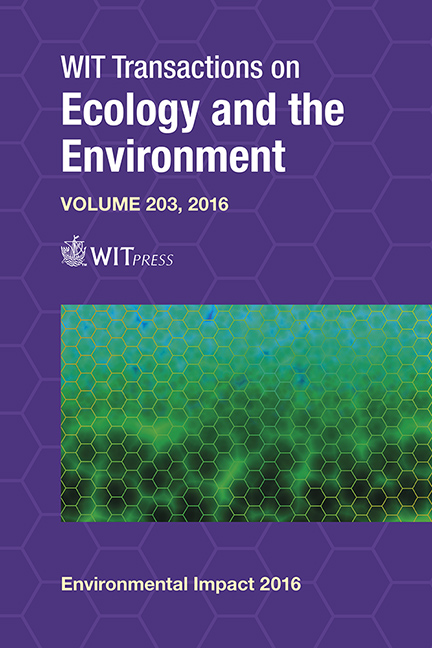Distribution Levels Of Lead And Cadmium Within Various Fresh Meat Tissues Of Beef, Goat And Lamb And Their Consumption Risk Assessment
Price
Free (open access)
Transaction
Volume
203
Pages
11
Page Range
101 - 111
Published
2016
Size
346 kb
Paper DOI
10.2495/EID160101
Copyright
WIT Press
Author(s)
P. J. Obeid, M. Younis, C. Saliba, J. El-Nakat
Abstract
Meat is widely considered to be a good source of protein, vitamins and minerals such as iron, selenium, zinc, vitamin B. Besides consuming meat muscle tissues, it is well known that in the Mediterranean area certain populations also consume other meat tissues as the bone marrow, fats, and what is known as “Fashi” or “Ma’alak” which contains the kidneys, spleen, liver, heart, and lungs. In addition, muscle, liver and kidney tissues of such organisms are widely consumed raw, without any further processing. The risk arises from the fact that such meat products are obtained from organisms which in turn have accumulated toxic metals in their tissues. Therefore, levels of lead (Pb) and cadmium (Cd) from various fresh meat tissues of beef, goat and lamb have been determined in Lebanon for the first time. Their inter- and intra-levels distribution were assessed and compared. Their potential exposure risk from dietary intake was also studied. A total of two hundred and forty (n=240) samples of fresh meat tissues (80 beef, 80 goat and 80 lamb) were collected over a period of several months from various slaughter houses. From each type of organism, five samples of nclusion tissues (heart, liver, fat, muscle, lung, kidney, bone marrow and spleen) were taken. Each individual sample was then subdivided into subsamples for subsequent analysis and quality control purposes. High-pressure closed vessel acid-assisted microwave digestion was used to digest all samples while graphite furnace atomic absorption spectroscopy was used for the quantification of the toxic metals. The data showed that the mean levels of Pb in goats ranged from 2.66 to 69.84 μg/Kg for the various tissues studied. In beef, they ranged from 0.50 to 41.34 μg/Kg. While in lamb, levels ranged from 1.59 to 95.95 μg/Kg. Meanwhile, the levels for Cd ranged from 2.39 to 635.86 μg/Kg for goat, 0.55 to 173.72 μg/Kg for beef, and 1.37 to 688.95 μg/Kg for lamb. Based on the inter-level distribution of Pb and Cd in various tissues, beef meat tissues were found to have lower levels than lamb or goats. These findings suggest that consuming beef meat tissues is much safer due to less exposure to such metals. For the intra-level distribution of Pb in goats, the spleen, kidney and liver were found to have the highest levels. The same pattern was also found for beef and lamb. As for cadmium, the data was clear in showing that in all three types of organisms and within each of their tissues, the liver and the kidneys accumulated noticeably high amounts as opposed to their other tissues. In comparison to the maximum allowable levels (MAL) for Pb and Cd in meat (100 and 50 μg/kg, respectively), none of the samples have exceeded the MAL for Pb, whereas for Cd, the liver and kidneys from all three organisms have exceeded the MAL for Cd. According to provisional tolerable weekly intake levels (PTWI) for Pb, and assuming a weekly consumption of 1 kg of the most contaminated meat tissue (lamb liver, 95.95 μg/kg) by a 60 kg individual, 6.4% of the PTWI will be reached. For a 14-year old child however, 27.4% of the PTWI will be reached suggesting that in the case of Pb, no major health concerns are present. For cadmium however, and considering the most contaminated tissue (lamb kidney, 688.95 μg/kg) 164% of Cd’s PTWI will be reached by a 60kg individual. The matter is much worse for a 14-year old child where 703% of the PTWI will be reached. In general, the work shows that beef meat tissues are safer for consumption but nevertheless, tissues from liver and kidneys of goat, beef and lamb should be minimized in all cases especially for children.
Keywords
distribution levels, lead, cadmium, meat, cow, goat, lamb, microwave acid-assisted digestion, graphite furnace atomic absorption spectroscopy (GFAAS)





